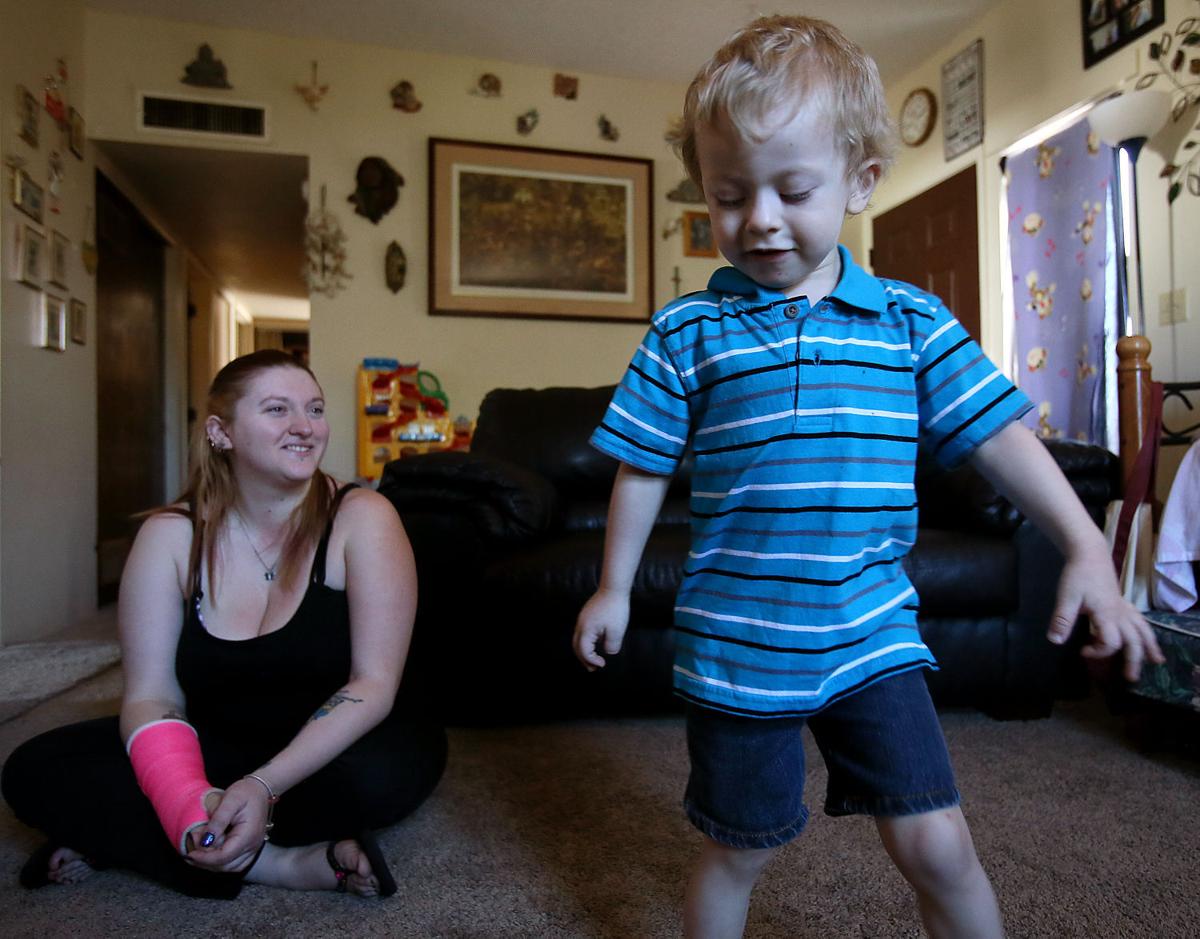Amber Bermudez remembers seeing the pickup truck run the red light, slamming on her car’s horn and hearing the ear-splitting crash.
And she remembers the words of the paramedic as she frantically tried getting to her 3-year-old son.
“Who installed your son’s car seat?” he asked.
Bermudez, 25, felt her heart sink.
“I did,” she replied.
“You saved his life,” the paramedic responded. “You did everything properly. Your son is not hurt, he’s fine. He’s perfectly fine.”
Bermudez burst into tears of relief.
The accident scene was a mess of broken glass and tangled metal. Bermudez could not move. Her back had locked up and her wrist and hand had been crushed. Her mother, in the passenger seat, was pinned against the dashboard, and her husband, in the back seat, had a severely injured arm.
All three adults had to go to the hospital, but 3-year-old Luis, firmly strapped in a rear-facing car seat, was unscathed.
Not all children in car seats go uninjured when there’s a crash.
A federal study released in May found installation errors in 46 percent of car and booster seats being used for infants and children ages birth through 8.
Other experts place the misuse even higher.
“In my personal experience as a car-seat technician, I see maybe two in 10 that are correctly installed,” said Officer Danny Peralta, who is the car-seat coordinator for the Tucson Police Department.
Three months before the crash, Bermudez had taken a car-seat safety course after watching a Kristi’s Kids segment on KVOA News Channel 4.
The class was funded by the Governor’s Office of Highway Safety in a partnership with Tucson police and Tucson Medical Center. Bermudez receive a free car seat when she completed the class and installed it herself. Peralta was her instructor.
Peralta has been to numerous traffic collisions where infants and children were injured because of improperly installed car seats.
He remembers one where a child died.
“If it had been installed correctly, it could have prevented the death,” he said.
Some of the common mistakes he sees are car seats that are too loose or are not suited to the child’s height and weight.
“I have seen a lot of older children in seats designed for infants,” he said.
Peralta said parents don’t have to spend $300 to get a good car seat — all are assessed for safety the same way.
But parents should never get a car seat that’s secondhand, and they should always check to make sure the one they own has not been recalled, said Valerie Vinyard of AAA Arizona in metro Tucson.
Anyone who wants to see whether their car seat has been recalled should go to safekids.org
Vinyard, who is a certified child-passenger safety technician, says toys and other items that parents sometimes attach to car seats, as well as items like computer tablets and books that are loose in the car, can become extremely dangerous to children during a crash.
“A 10-pound gym bag can be like a refrigerator at 35 miles per hour,” she said.
One problem she sees is car seats that are too loose — they should never move more than an inch.
Bermudez said she installed her car seat after taking Peralta’s course and learned that she shouldn’t be using both the seat belt and the LATCH (lower anchors and tethers for children) system to install a car seat.
It’s considered best practice to use either one or the other, but not both. Bermudez uses the LATCH system only. And Peralta said Bermudez was smart to keep Luis rear-facing, something she also learned in his class.
The American Academy of Pediatrics recommends that all infants ride rear-facing, starting with their first ride home from the hospital. Also, all infants and toddlers should ride in a rear-facing seat until they are at least 2 years old or, preferably, until they reach the highest weight or height allowed by their car-seat manufacturer, pediatricians say.
Most convertible seats allow 30 to 40 pounds. Luis is 30 pounds and well within the weight limit on his seat.
Keeping a child rear-facing as long as possible helps protect children’s heads, necks and spines in a crash as they cocoon into their seat, said Kimberly Romo of Tucson Medical Center.
Bermudez recently had her right hand and wrist reconstructed, and both her husband and mother continue to recover from their injuries.
“My husband’s arm was broken so badly they needed a metal plate to fix it. It snapped completely in half,” she said. “My mom had nerve damage and she still has a lot of trouble walking.”
But she was so grateful that Luis was unscathed that about a week after the Dec. 1 crash she tracked down Peralta to thank him.
“It was completely rewarding to know that the service I provided helped saved the life of a young child,” Peralta said. “To hear Amber say those words to me on the phone solidified the exact reason I became a police officer.”





